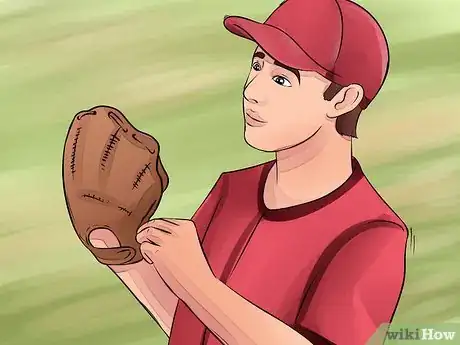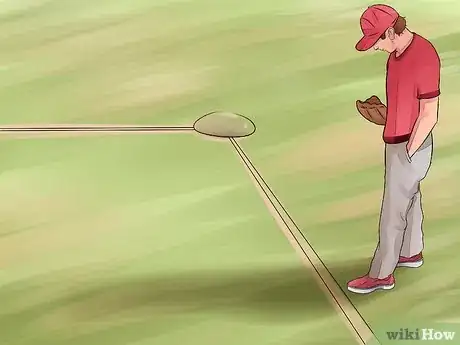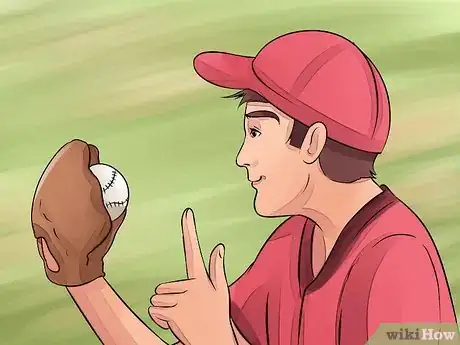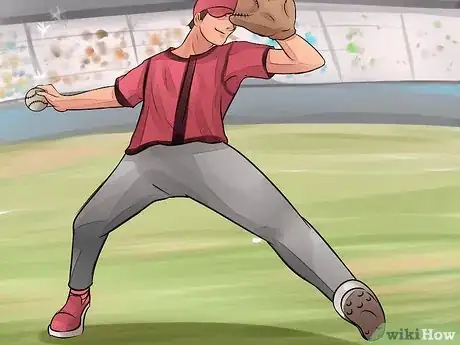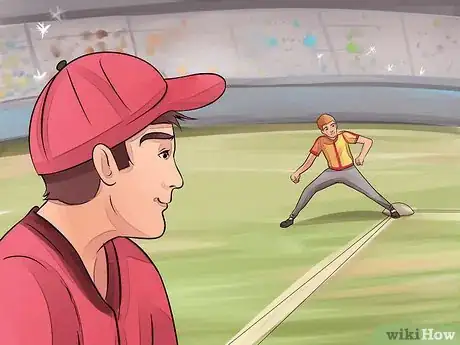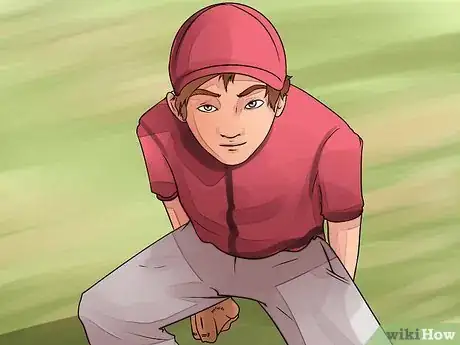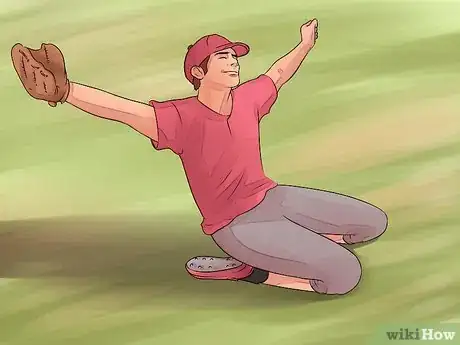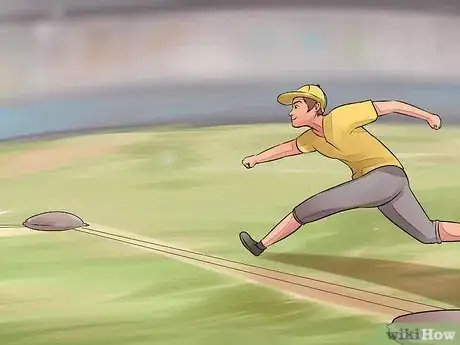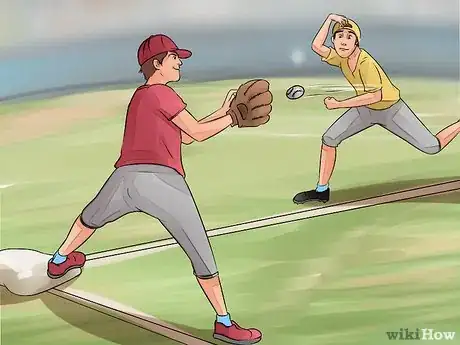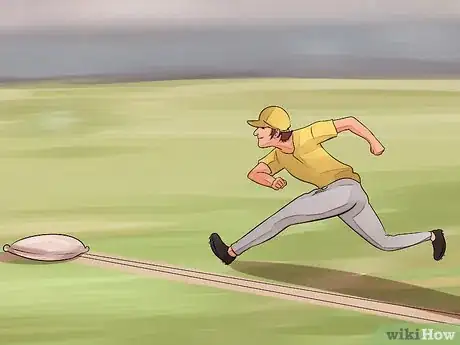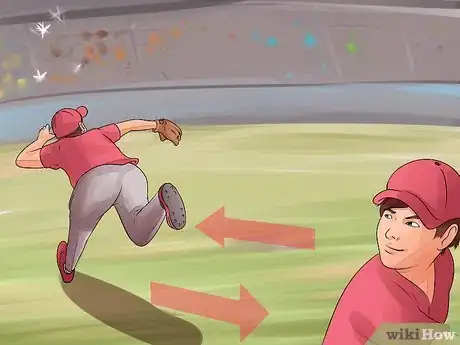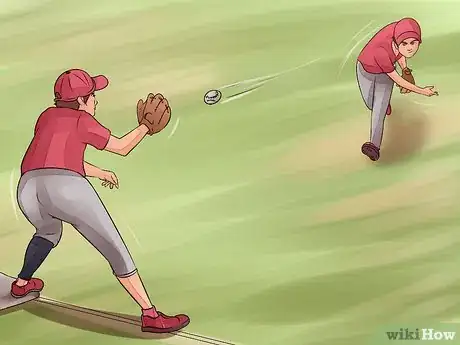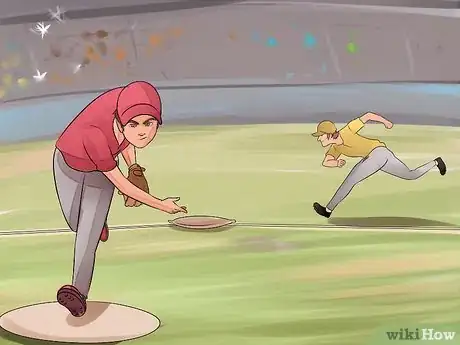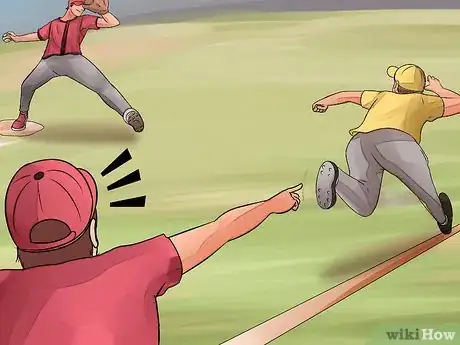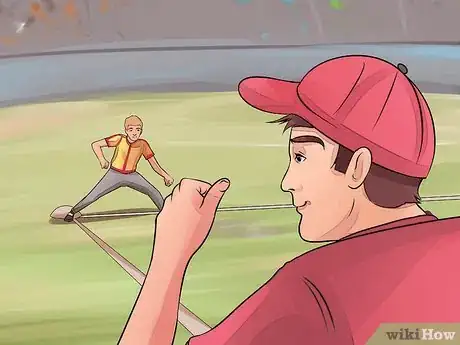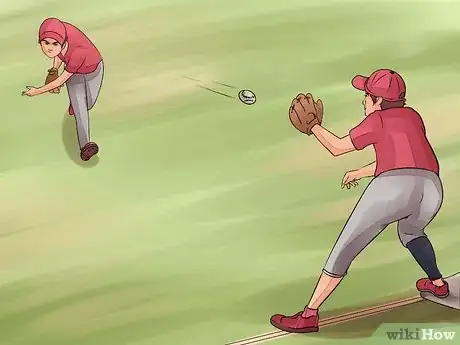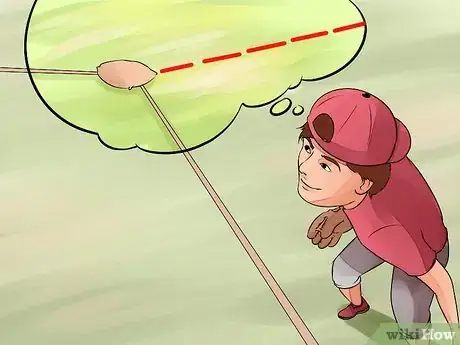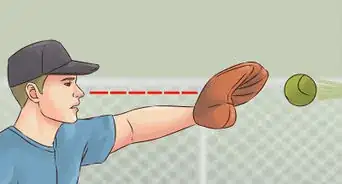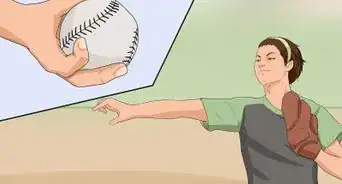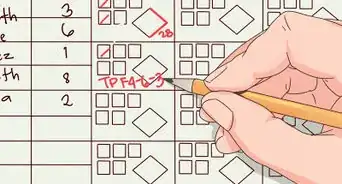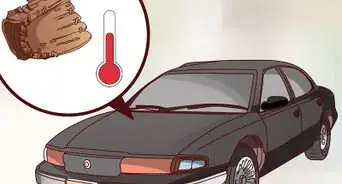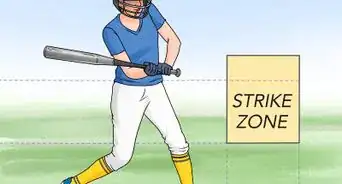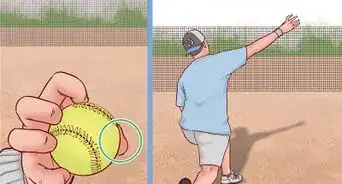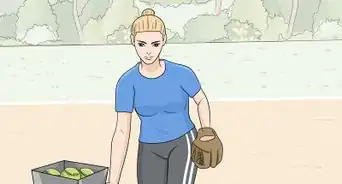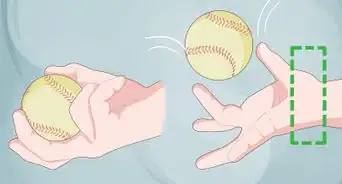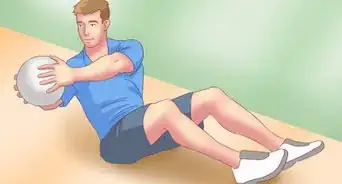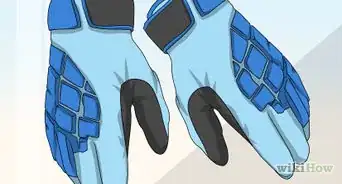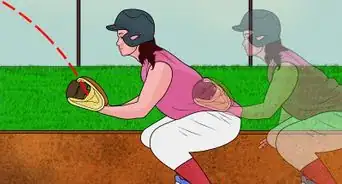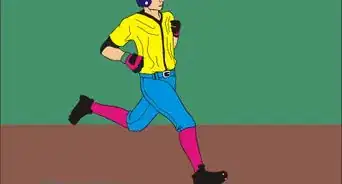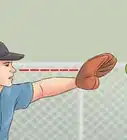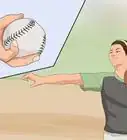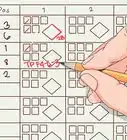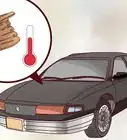X
This article was co-authored by Haley Snyder. Haley Snyder is a former Division I Student-Athlete and Softball Player. With over a decade of experience, she specializes in softball mechanics, fundamentals, and pitching. Haley holds a BA and MA from Stanford University, where she competed in the PAC-12 Conference as a pitcher.
This article has been viewed 67,709 times.
Not familiar with playing second base? New at softball? Asking yourself how to play second base? This article will help guide you on how to be a second baseman/base woman!
Steps
Part 1
Part 1 of 2:
General Skills
-
1Acquire a glove. Since this is infield a 12 inch (30.5 cm) should be just fine. A broken in glove is best.
- Make sure that the glove is a good fit. Your fingers shouldn't hit the end of the finger pockets, but they also shouldn't be sitting in the palm of your glove.
-
2Stand between first and second base. This is your starting position. From here, you can move to cover first or second base, and you're filling the space in between so that you can get any balls hit there.
- If you have a left handed batter, take a small step closer to 1st, not more than a few steps though.
- If there is a runner on first, step a little to second base. More than likely you will get a throw, and it's faster to run to second when you're closer to the base.
Advertisement -
3Know the count, and where the play is. Prepare for every possible situation. Know where to throw the ball if it comes to you, and what base to cover if it doesn't. Talk to your teammates so that you all know where to play the ball.
-
4Know where to throw. Always know where the runners are. Try to get the lead runner. They have a better chance of scoring, and getting them out first will make it easier to get future runners. If you are not sure where to play, throw to first. That is your best bet.
-
5Watch the lead runner. This gives you a chance to warn the catcher or the player if the runner tries to steal. This can help them respond faster when the runner starts running.
-
6Never get distracted. Stay on your toes, ready to move any direction at any moment. Always keep an eye on the batter and the ball. Be ready for anything that comes your way.
-
7Have fun. Playing is all about having fun. Don't give off negative attitude. It boosts your spirit and friendship with the other team and also makes the rest of the players on yours and the others team happier and spirit lifted. Encourage your teammates and always thank the other team for a good game.
Advertisement
Part 2
Part 2 of 2:
Positioning and Making Plays
-
1If the ball is hit to first, and the first baseman has to run off, back them up. More than likely you will receive a throw. Don't worry, shortstop will cover your position!
-
2If the ball is hit to short stop or third base (left field) run to second. Shortstop can't cover, so you have to run!
-
3When the batter shows bunt, cover first base because first baseman will come closer to home for a bunt. If you cover first, the catcher,first baseman, or third baseman can throw the ball to you to get the batter out.
-
4If the batter shows bunt and there is a runner on first and third then you will have the cover second base in case there is a throw down from the catcher to you. Shortstop can't cover second because the have to back up third base.
-
5Back up your teammates in case of bad throws. Most of the time shortstop covers second base. If there's nowhere else you're supposed to be, back her up.
-
6If the ball is hit to the outfield, don't forget about cutoffs. If it is hit far out in left field you cover second base. If it is far out in right field, then you are to run and be the cut off. Short stop will cover second base.
-
7After every pitch thrown by the pitcher, back up the throw from the catcher to the pitcher. If there is a runner, they will go on a bad throw from the catcher. If you back up the throw you could possibly throw the runner out.
-
8When a batter gets walked or gets a drop third strike, they might touch first and round it so they can attempt to go to second base. You have to remember to watch the runner and back up the throw in case the runner does run to second. Alert the pitcher when they have the ball if the runner on first is attempting to go to second because they may not be paying attention and they could throw it to second or first and possibly get the runner out.
-
9When there is a runner on second, stop going to second for a throw down because the catcher will rarely throw down to second with a runner there. Just start backing up the pitcher once there is a runner on second.
-
10If you have a runner going from first to second and the ball is hit to you, depending on where you are either throw to first or step on second. In this scenario, you don't have to tag the runner. There will be other events where you have to tag the runner.
-
11Know the boundary line between you and short stop. Think of an imaginary line from the pitcher to the actual second base. Don't intrude when a grounder or pop fly is hit to them and they won't intrude when a grounder or pop fly is hit to you.
Advertisement
Expert Q&A
-
QuestionHow can you be a good outfielder in softball?
 Haley SnyderHaley Snyder is a former Division I Student-Athlete and Softball Player. With over a decade of experience, she specializes in softball mechanics, fundamentals, and pitching. Haley holds a BA and MA from Stanford University, where she competed in the PAC-12 Conference as a pitcher.
Haley SnyderHaley Snyder is a former Division I Student-Athlete and Softball Player. With over a decade of experience, she specializes in softball mechanics, fundamentals, and pitching. Haley holds a BA and MA from Stanford University, where she competed in the PAC-12 Conference as a pitcher.
Softball Player It's all about having really good reads on the ball! For example, if you see slappers, push yourself in to cut down on the time it'll take you to get the ball. For every close play or throw, make sure that you're getting behind the ball. You never want the ball to be further than where you are, because it's going to take you away from the play that you're trying to convey.
It's all about having really good reads on the ball! For example, if you see slappers, push yourself in to cut down on the time it'll take you to get the ball. For every close play or throw, make sure that you're getting behind the ball. You never want the ball to be further than where you are, because it's going to take you away from the play that you're trying to convey. -
QuestionWhat do I do if the ball goes way out to left field?
 Community AnswerYou cover second base.
Community AnswerYou cover second base. -
QuestionIf the ball is past centerfield, is second base the centerfielder's cover or the shortstop's?
 DonaganTop AnswererThat's up to the coach. On a ball hit over the centerfielder, you would normally concede second base to the batter, which means the second baseman would cover second and the shortstop would act as cutoff or relay to third base or home.
DonaganTop AnswererThat's up to the coach. On a ball hit over the centerfielder, you would normally concede second base to the batter, which means the second baseman would cover second and the shortstop would act as cutoff or relay to third base or home.
Advertisement
Warnings
- Be careful of sliding runners. Some might even push you out of their way.⧼thumbs_response⧽
- Depending on the field condition balls can take bad hops and pop up at you, but that does not mean you have to move out of the way. Stay in front of the ball. Your job is to stop it and get an out. It might hit you if it’s a wild enough hop.⧼thumbs_response⧽
Advertisement
About This Article
Advertisement
